Strategy
Tips on How to Plan a Content Marketing Strategy for a Book
Eating your own dog food. It’s one of those business sayings I never quite understood.
It means using your own product. Why is it dog food and not—you know—pizza? I have no idea. But I recently decided to dogfood Contently for a personal project—the launch of my upcoming book Dream Teams. Along the way, I realized this could be instructive to a lot of marketers out there, whether you use a content platform or not.
A book launch is a near-perfect example of the kind of marketing campaign that requires accountable content. Content is the key to optimizing conversion rates across the marketing funnel—from raising awareness about the book, to gathering supporters and subscribers, to driving conversions, and finally to getting buyers to write reviews and spread the word.

As an author, you have anywhere from 6–12 months from the time you finalize your manuscript to when people can buy it. However, the most effective marketing happens within a couple months of the publish date. This means you have a lot of time to create content to support it. Enough time, in fact, to use my favorite content strategy framework:
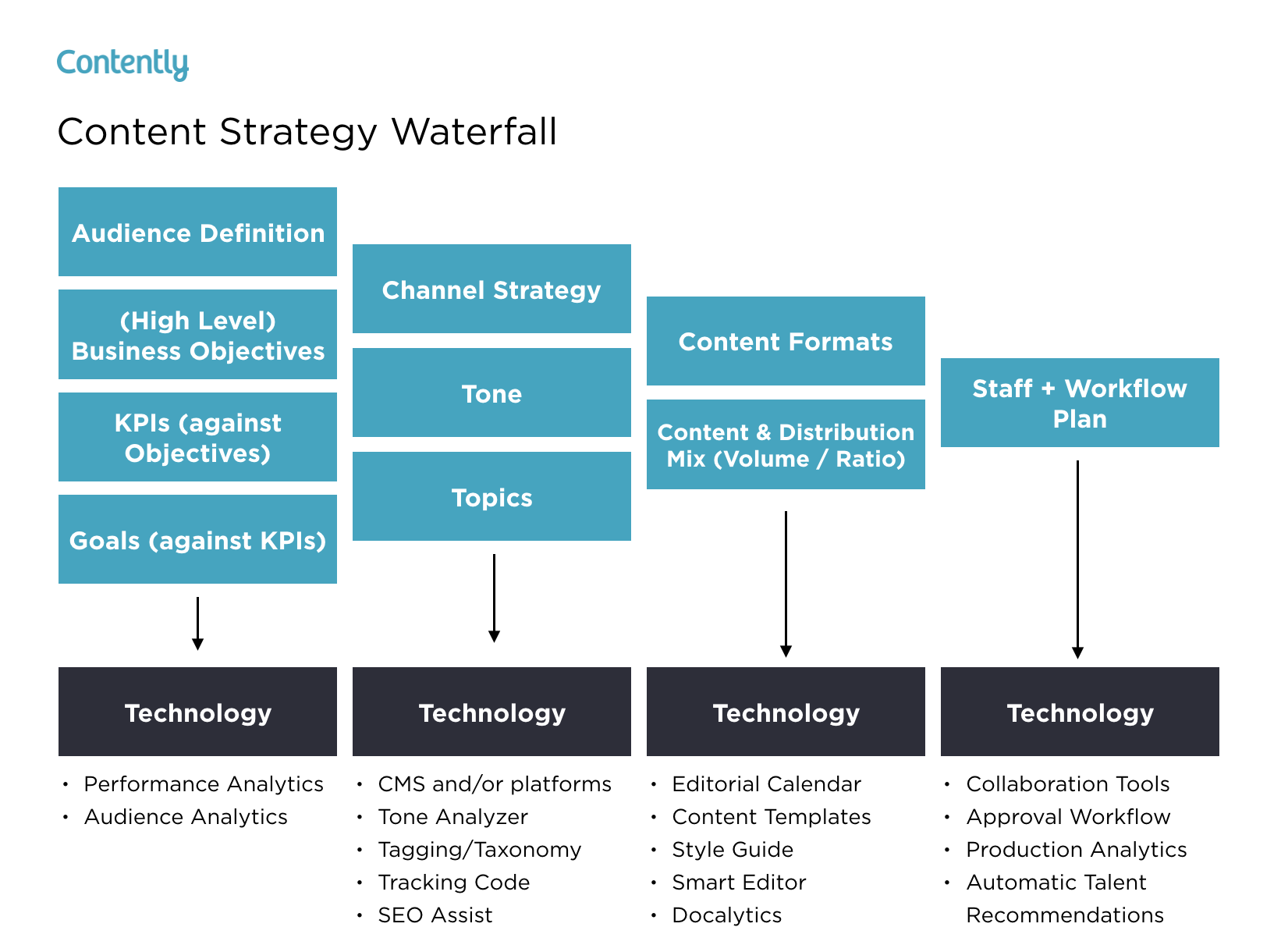
Here’s a peek behind the scenes of how I’m using content strategy and technology to get the most out of this book launch, along with some lessons for marketers of all stripes:
Content Strategy
Content strategy starts with the audience. For Dream Teams, I broke my audience into three groups. The core audience consists of leaders, coaches, and HR professionals. The secondary audience is made up of entrepreneurs and ambitious people who work and play on teams. Lastly, there’s an aspirational audience of general nonfiction book buyers, history buffs, and pop-sci nerds.
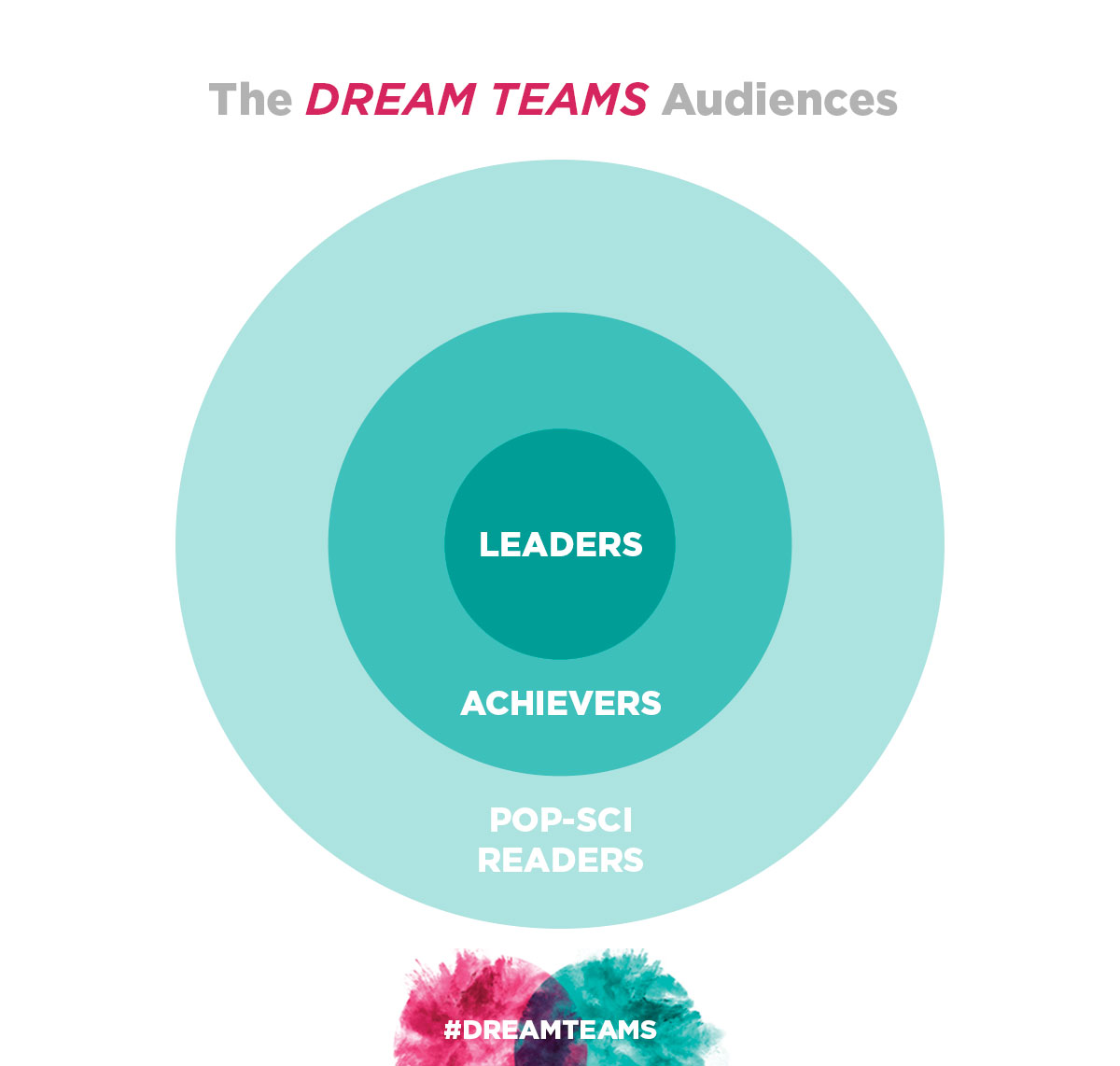
Business Objective
For each audience, I have a primary business objective:
- Leaders: Buy books to help/develop their organization.
- Achievers: Buy a book for one’s own development.
- Pop-Sci Readers: Buy a book for curiosity and entertainment.
Key Metrics
With those specific objectives, it behooves me to keep track of the following metrics:
- Reach
- Subscribers / followers (and reach-to-subscription rate)
- Clicks to product page (and follower-to-click rate)
- Sales (and click-to-sale rate)
Ultimate Business Goal
My goal is to generate 10,000 sales by the end of launch week. (Not including bulk orders for organizations that have me come speak in exchange for buying a lot of books.)
That’s about $200,000 in books sold. (Too bad I will only see a fraction of that!) While riches would be great, my underlying goal is to build influence—to get a message of change out. In the long run, selling books builds my brand and allows me to further my company and ideas.
So how the heck are we going to make 10,000 conversions by June? To get there, we need to estimate the conversion rates of each of the steps in my funnel. With that math, we can ballpark the amount of content and promotion I’ll need. These rates will depend on the channels we use, but based on the averages I saw from my last book launch, I think we can estimate something like this:
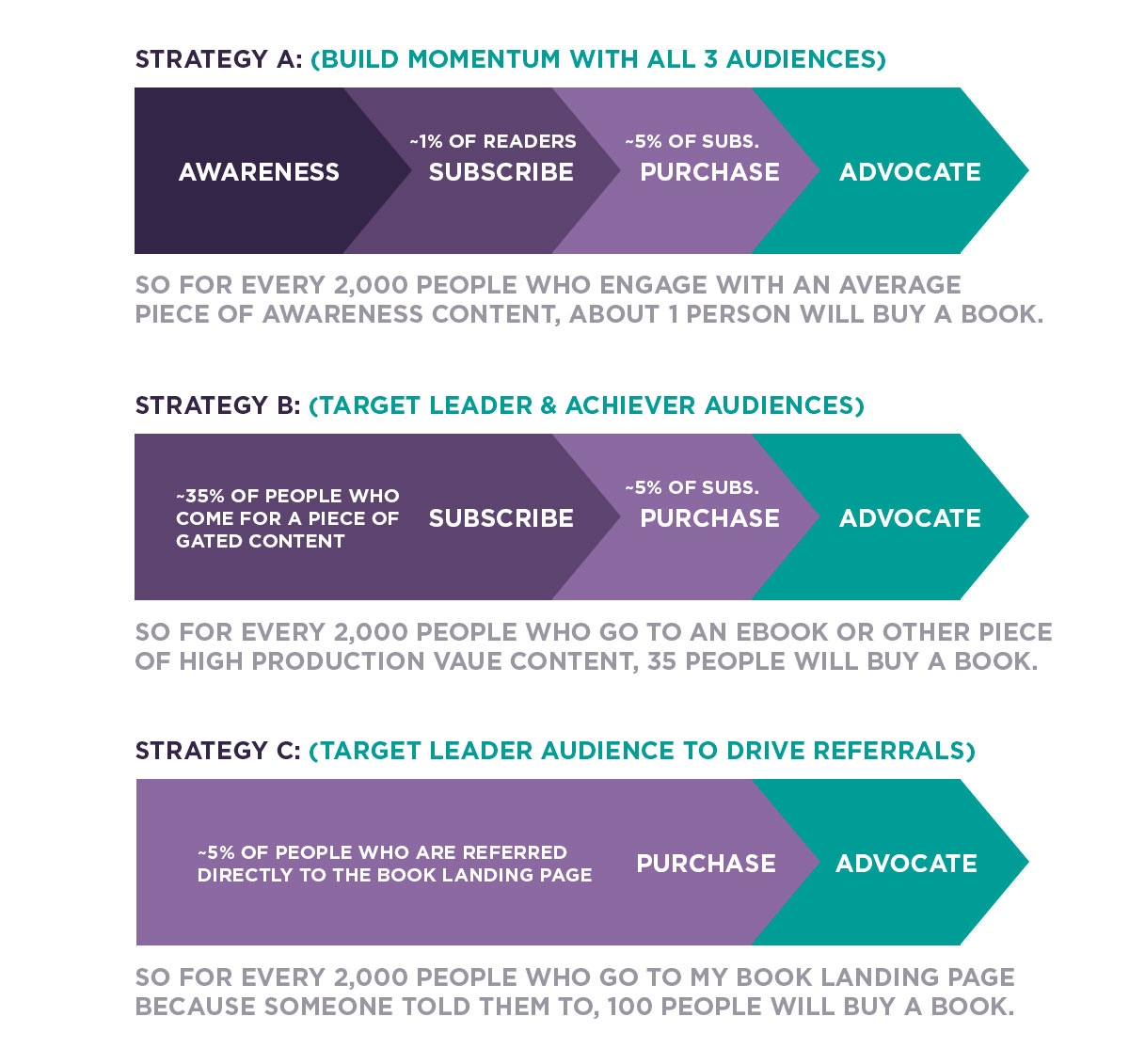
Now we need to measure the capacity of all the channels through which I can reach my audiences, then figure out the most cost-effective way to fill these channels with content that converts at these rates or better.
But first, let’s pause for a picture of a dog eyeing a slice of pizza.

Channels
Okay, back to the plan. Where do these potential book buyers hang out, you ask? Here’s some rough analysis:
Leaders: LinkedIn, Twitter, airport bookstores, cable TV (CNN & Bloomberg), and the trusty ol’ email inbox. For the sake of this article, let’s assume that the non-Internet channels won’t contribute much to the 10,000 books I hope to sell (a good assumption).
Achievers: Same as above, also more likely to spend time with podcasts, Instagram, Facebook, and Medium.
Pop-Sci Readers: Same as above, but also: Goodreads, book blogs, science pubs, hometown bookstores, YouTube.
There are three ways to get to people in any of these channels at any stage of the funnel: owned, earned, and paid. Let’s add up the capacity (and cost) of each:
Owned Audience:
I started the campaign with a ton of LinkedIn followers and email subscribers, a large handful of Twitter and Medium followers, plus a Facebook page with a lot of followers and a sad amount of organic reach. Basically nobody follows my Instagram. (But you could!)

Each of my three audiences will convert at different rates, but I have average conversion data from my time writing articles and newsletters, and from the launch of previous books that we can use for estimates.
I don’t have any YouTube subscribers, but I can still create owned content for YouTube. It just needs to be embedded in my other channels or shared by influencers (which would be earned content).
Given that every social post includes a call-to-action to read a post on my blog, each post on my blog has a CTA to subscribe to my email list (or download an e-book in exchange for subscribing), and each email I send has a CTA to buy a book, the path to getting 10,000 conversions will be some version of the following:
- 120 blog posts, each posted in three locations and promoted on three social networks
- 120 native social/visual posts, each promoted on three social networks
This puts my conversion estimate at about 9,400—almost there. This is, of course, assuming that I only do owned content. However, we can juice things through a little earned and paid, and cut the amount of content down by about 50 percent:
Earned Audience:
If I post enough great content, there’s a chance something will catch fire and go viral. I can’t count on this, so I won’t factor it into my content strategy. But I’ll secretly hope it happens a time or two during the course of my campaign. Viral lift is the cherry on top of a good content strategy, not the cake. (Feel free to tweet that.)
Aside from that, I’m simply going to send the content I’m publishing to select influencers and press who might enjoy it. If I’m methodical in my promotion, I can pretty much count on one influencer, leader, or member of the press to share my work an average of once per weekday.
There’s a limit to the amount of content I can post per day before I start to lose the marginal benefit of an organic and earned audience. To prevent that, I’ll top out my audience at a blog post a day, an e-book a week, and four social posts a day. My strategy is to post every blog post in three places—my LinkedIn Influencer blog; Medium; and either Contently, Fast Company, someone else’s blog, or my email list. Then I’ll promote each post one time across social channels for every place it goes.
Paid Audience:
Paid promo is how we fuel our content fire. Any piece of content that performs well will get a little paid boost, via native ads.
When it comes to paid content promo, there are four major players in town: Facebook, LinkedIn, Twitter, and Outbrain/Taboola. Since I only have time for one or two platforms, I’ll primarily stick with Facebook and LinkedIn.
In terms of content types, I’m mostly going to boost substantial content like e-books that are likely to generate more email subscribers. If paid engagement costs $0.25 per Facebook click, at the standard conversion rate I’m expecting, I should pay $0.71 per subscriber, which should pan out to $3.57 per sale. (Plus, I will build up my subscriber base this way, which gets me better organic results later on.)
That wraps up my content strategy. But as they say, “No plan survives first contact with the enemy,” so as soon as the campaign starts, I’m going to measure everything and adjust as needed.
Process & Workflow
Now comes the fun part (for me, at least)—creating content. With my strategy in mind, I came up with a giant list of blog posts, videos, and e-books…
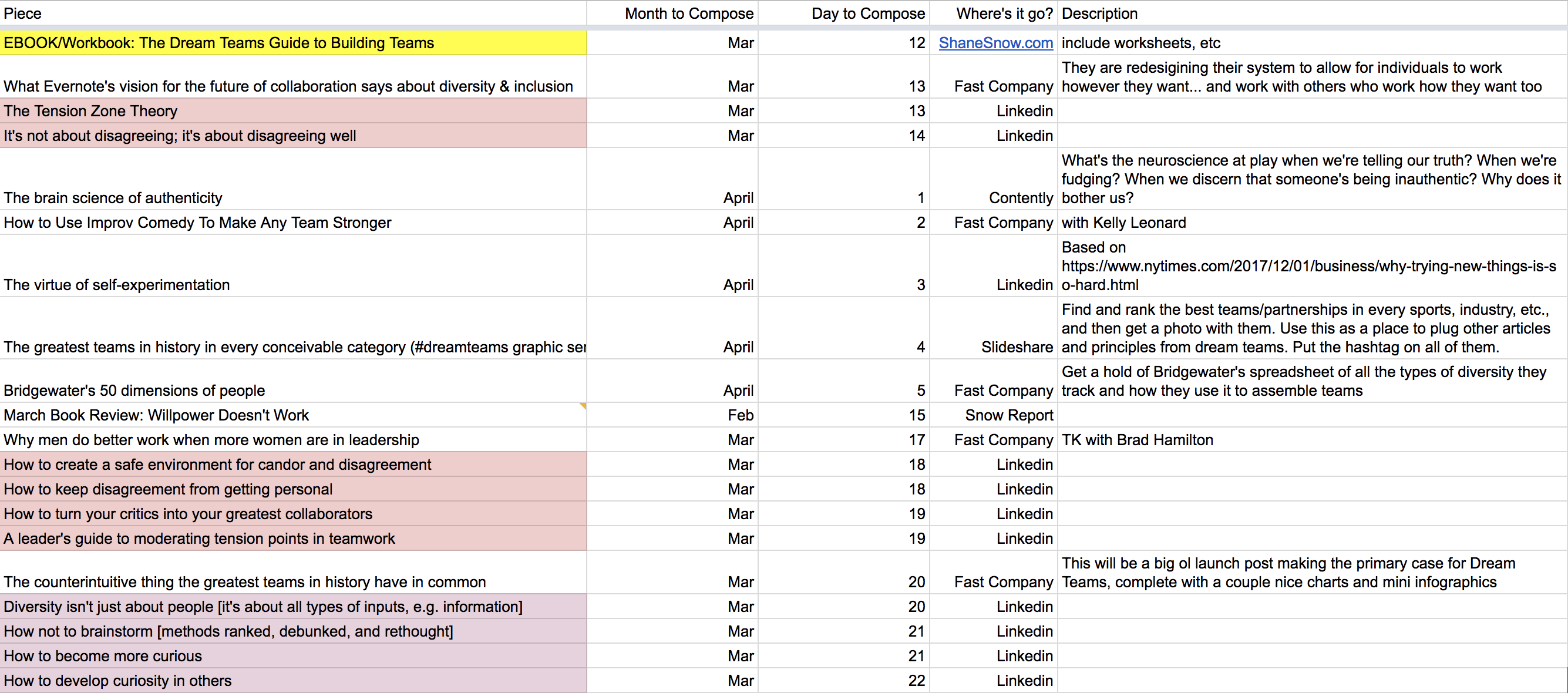
… to fill the campaign. To keep a steady drip of top-of-funnel content going, I’ve also decided to tease some of my favorite snippets from the book once per day. So this spreadsheet…
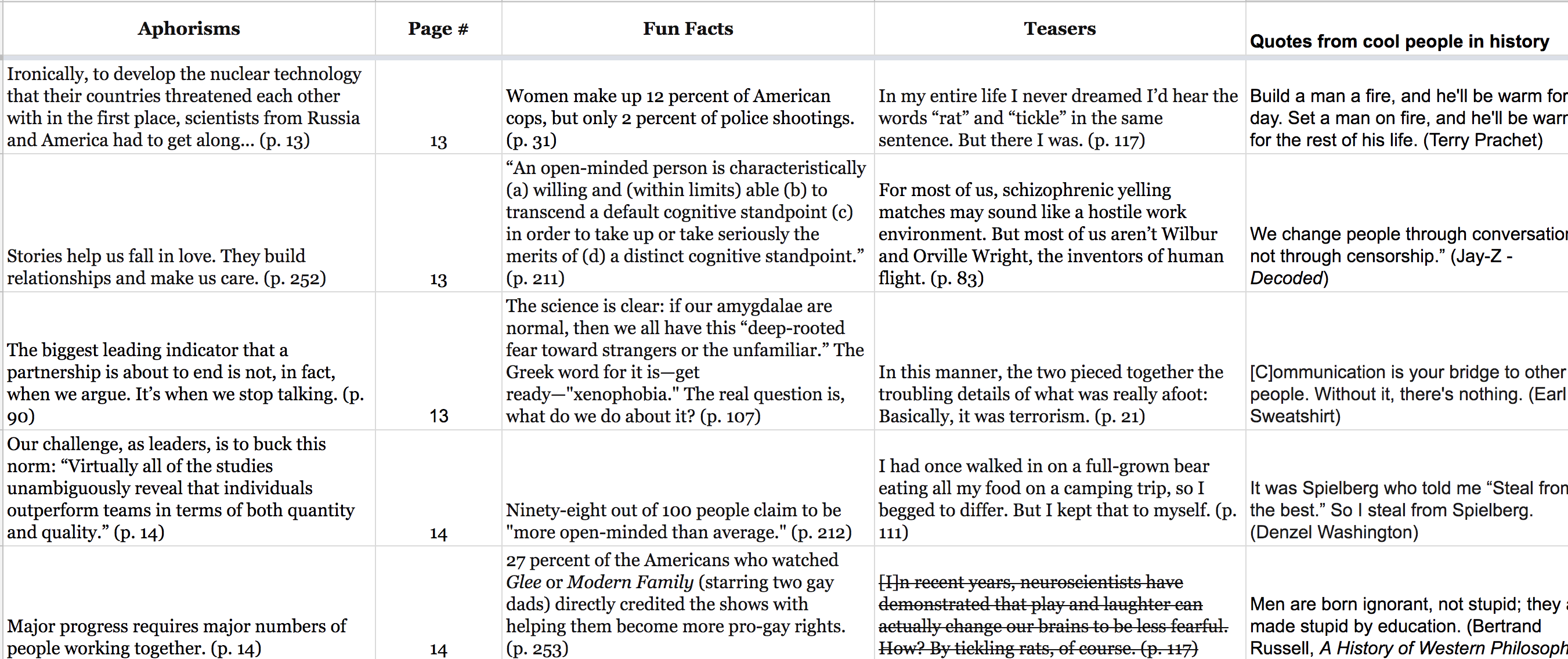
…becomes…
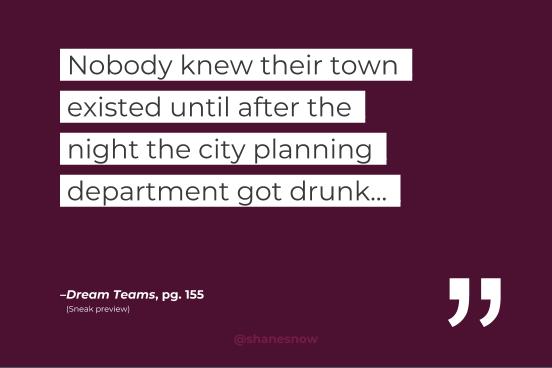
I’ll need help to pull this off. And Dream Teams is about collaboration, after all, so this next part makes me especially happy.
Building The Team
I’m the main guy behind all these posts and ebooks and videos, but I need to make sure I get things done right and on time. So I put together the following gang to run my Contently campaign:

Frank = my Fear and Loathing-style lawyer, but also my editor—to catch mistakes and make all my posts sing.
Hunter = my video guy.
Karina = my production and marketing manager—to handle images, final checks, posting, and generally keeping the trains running on time.
Kieran = my social media manager—to promote all posts appropriately, along with the social content, for which we’re using Buffer.
Building The Workflows
I put together four workflows, one for each content destination. All the workflows start with me writing, then go to Frank for editing, and move to Karina for formatting, posting, and reposting.
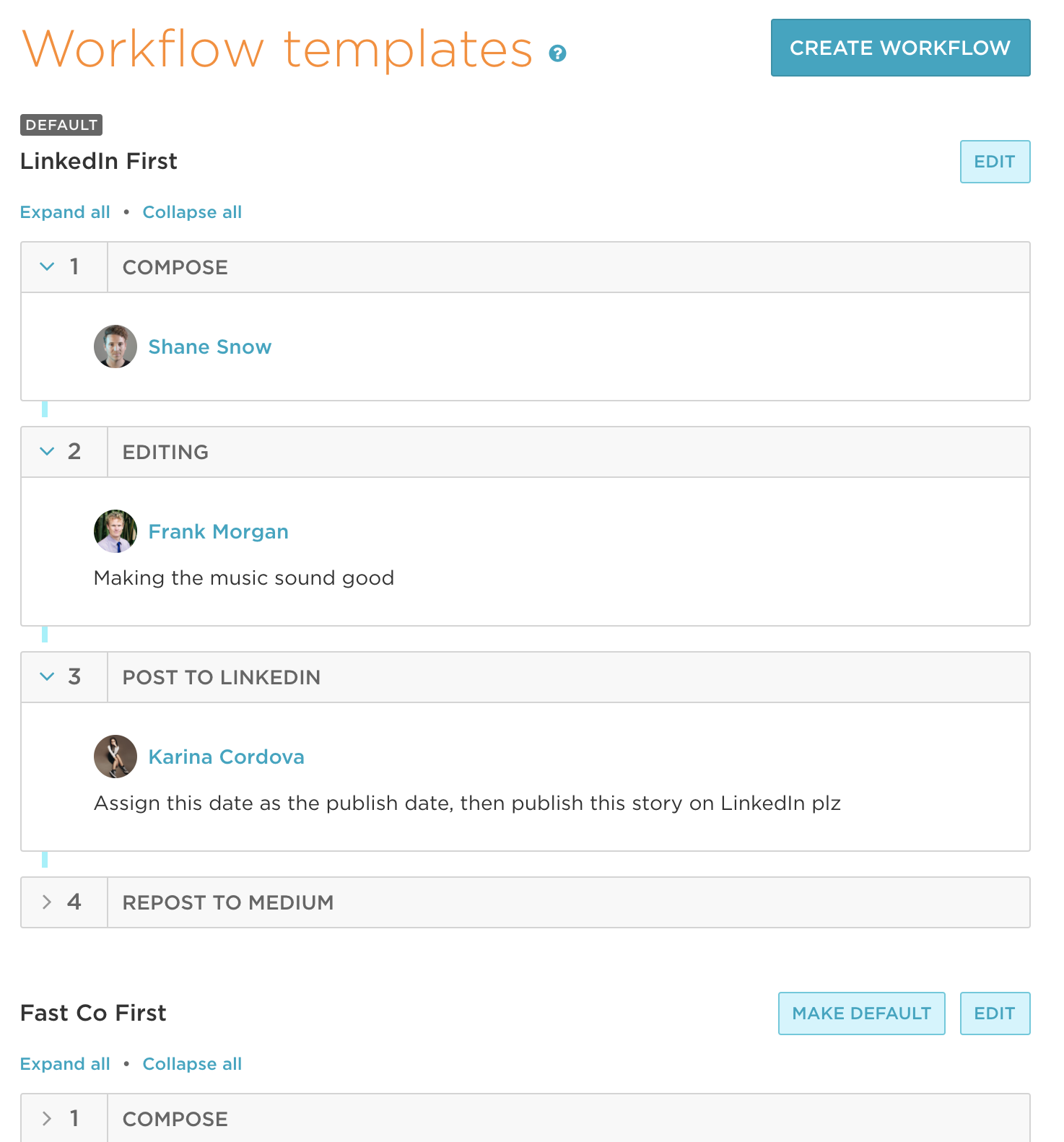
Kieran will watch the editorial calendar so he knows when to promote things (and he can have notifications tell him via email or Slack when things are ready to promote, if he wants to be more reactive than proactive).
Speaking of which…
Building The Campaign Calendar
I set up a “Dream Teams Launch” campaign within my dashboard and had Karina load in all of the posts with deadlines for each step. Any of us can log in and add story ideas to the “Pitches” tab, and let the gang weigh in on them.
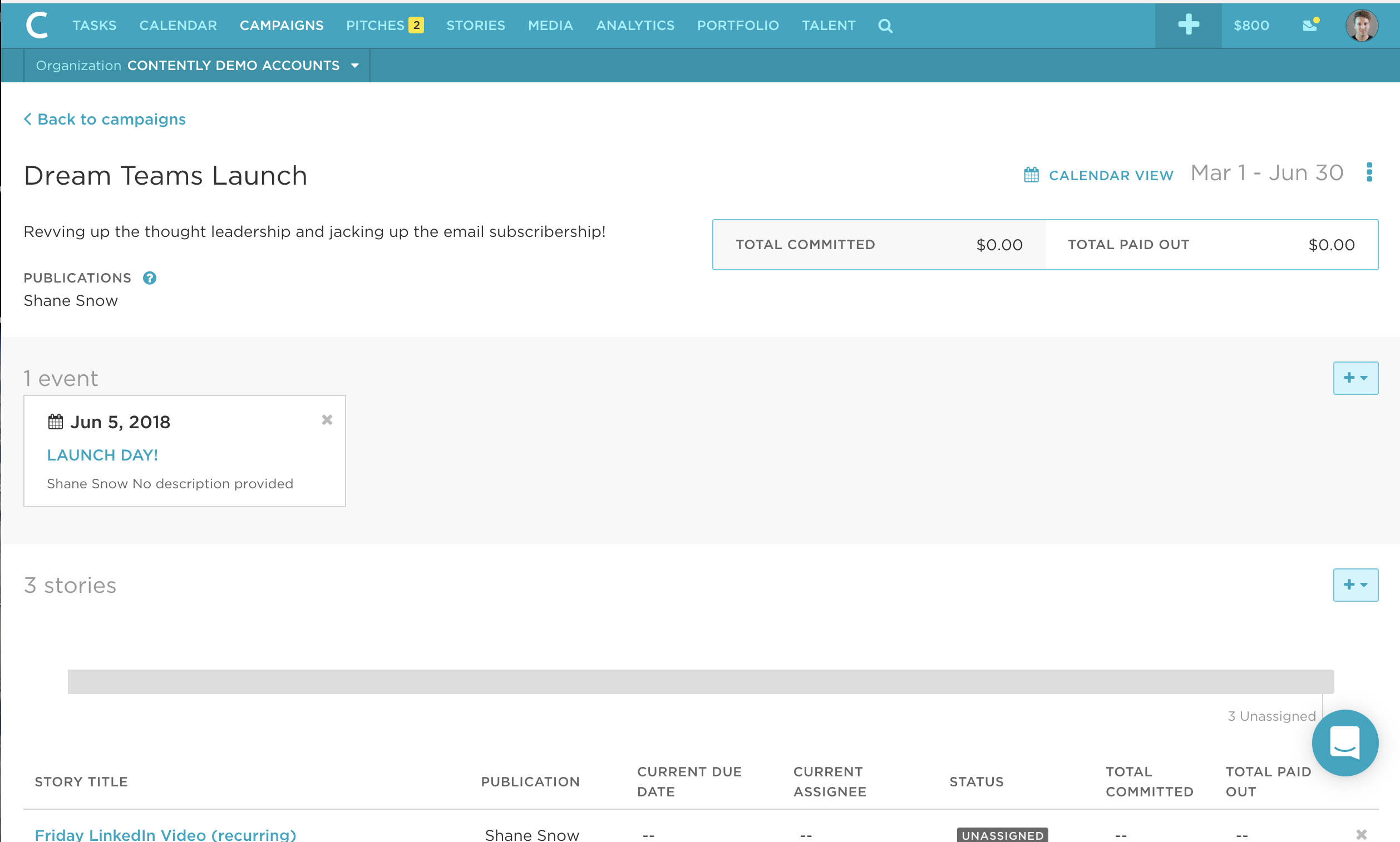
Also, as a fun aside, once the campaign got going, I logged in to add a timely story to the calendar, and Contently’s recommendation robot (what we call The Content Decision Engine, which pops up in various spots to make suggestions) told me which members of the team would be most likely to pull off this particular topic, based on recent analytics:

(Booyah!)
My workflows are automatically set up to time edits and re-posts at set intervals, but any step can be changed at any point, via drag and drop or manually. (Note how I was already behind on my writing schedule by the time I took this screenshot…)
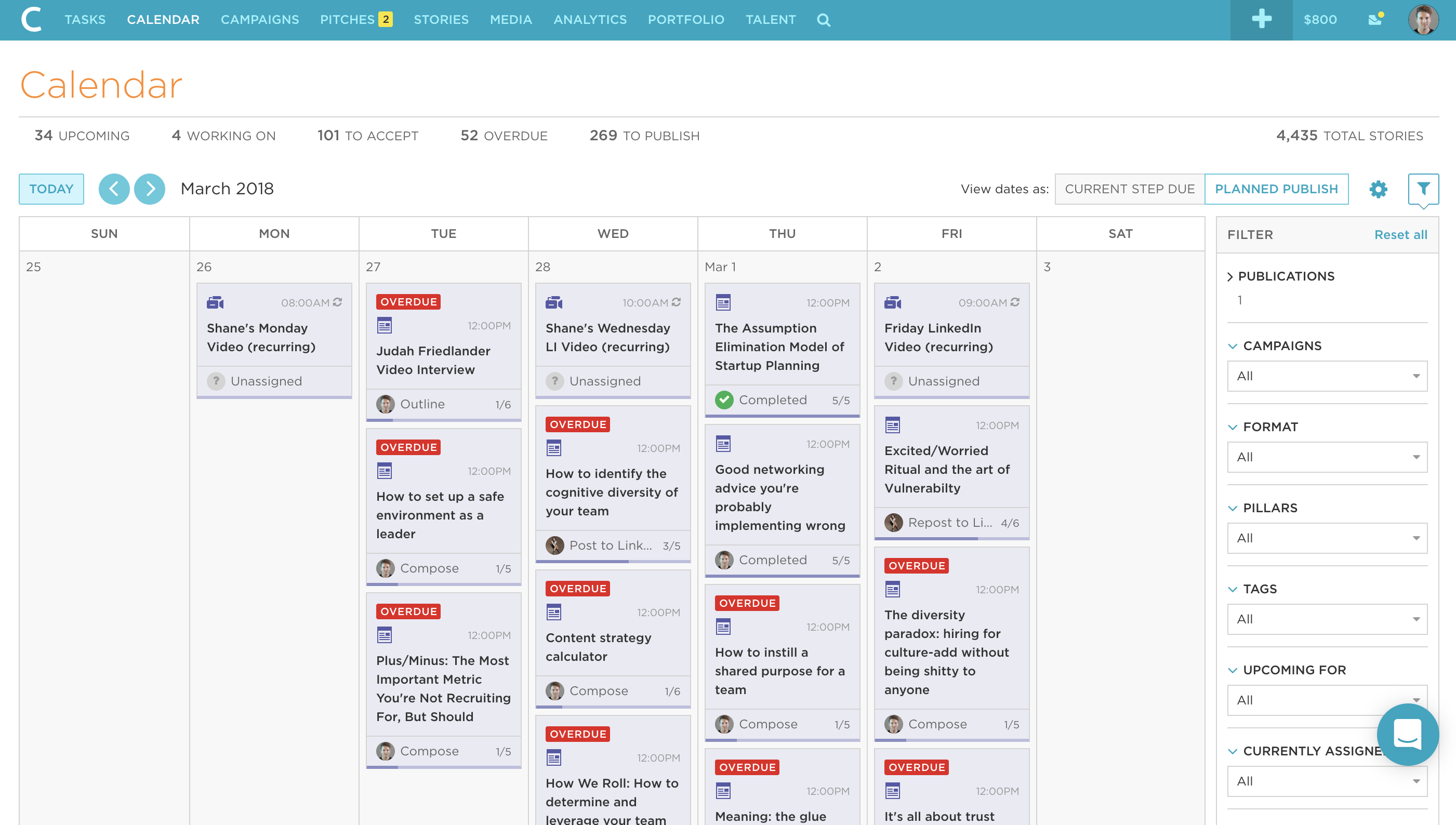
Now every day when I log into my Contently Dashboard, I see a to-do list of content things that pertain to me (including assignments from my other projects):

Frank, Karina, and Kieran all see their own to-do lists as well. As the admin, I have permission to check on them if I want, but in reality, Karina is the one managing me, so I just granted her the permission to oversee everything.
Creating, Publishing, and Optimizing
Every post gets a little home on Contently where Frank and I hash out the content…
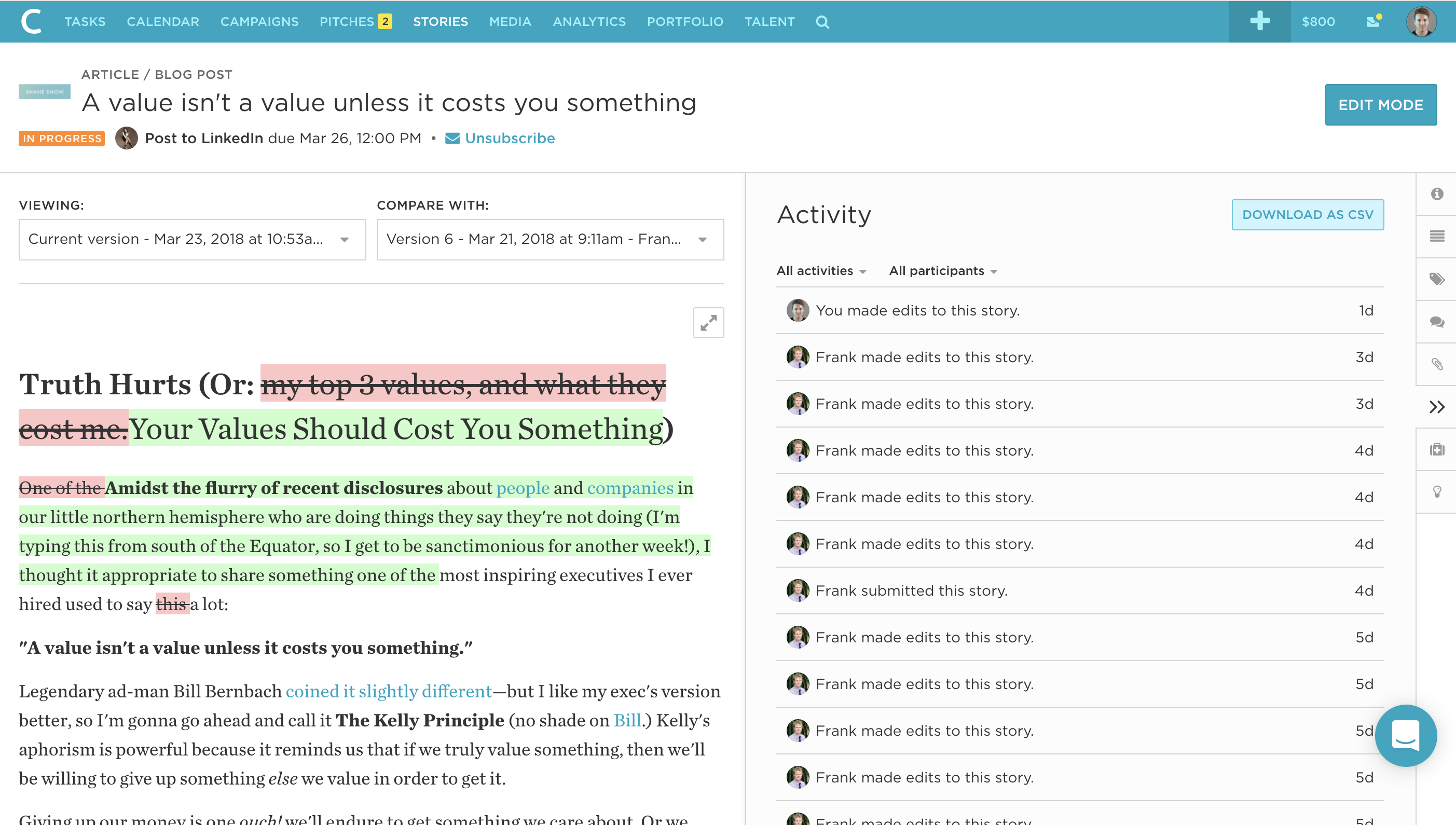
…and where Contently’s “Decision Engine” recommends things to add and/or scolds me when I get off base from my content strategy or good SEO practices:
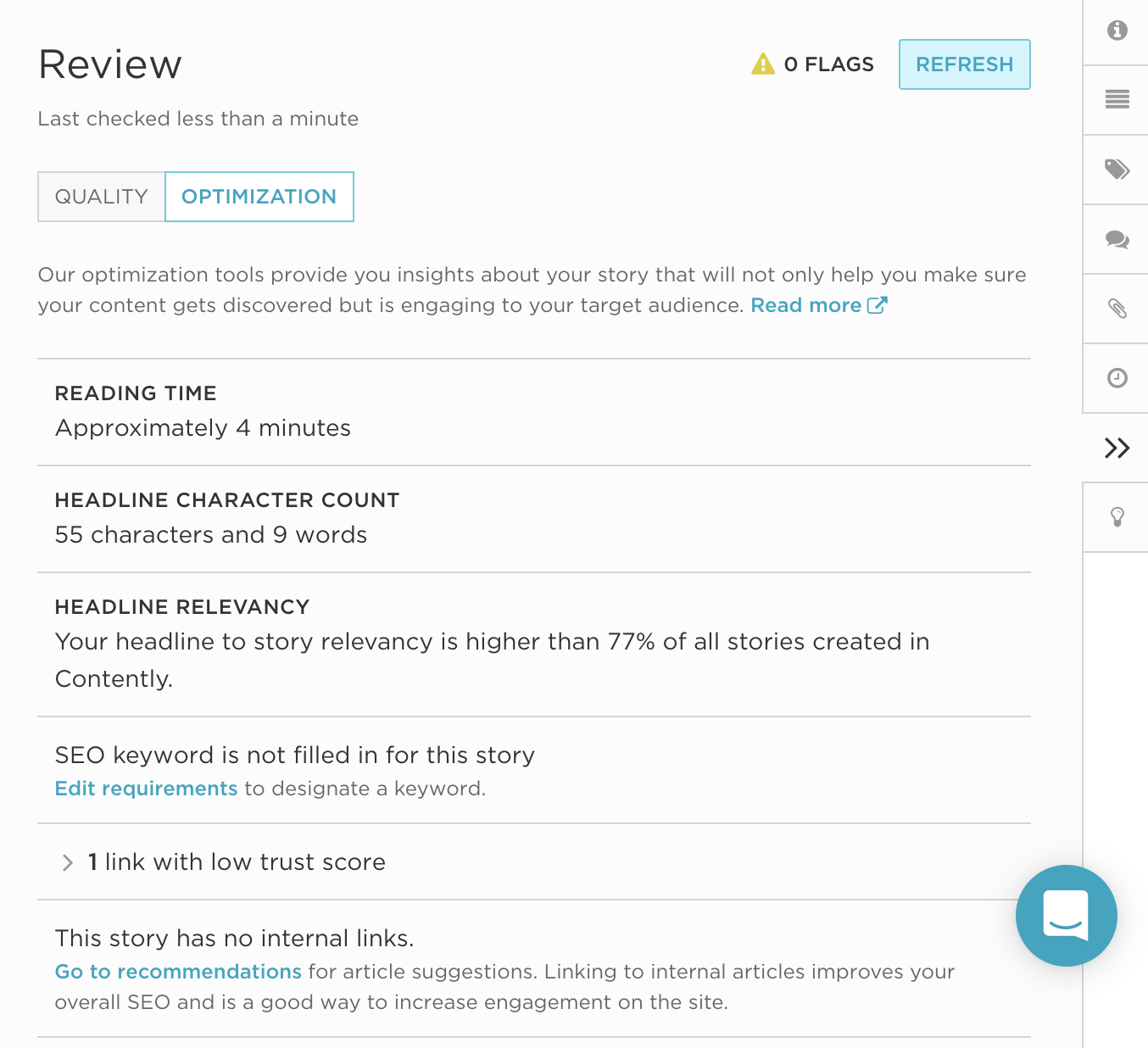
When it’s time to publish, Karina adds a CTA to the bottom of each post based on where it’s going (each of which has a special tracked link, so we can see which posts and channels perform best). Then she hits a button to publish or download (depending on the platform—so for example we can email completed stories to my editors at places like Fast Company).
For my e-books, slideshows, and other documents, we use Docalytics, which offers version control and advanced metrics for downloadable content. I can track each document’s performance on a page-by-page basis:
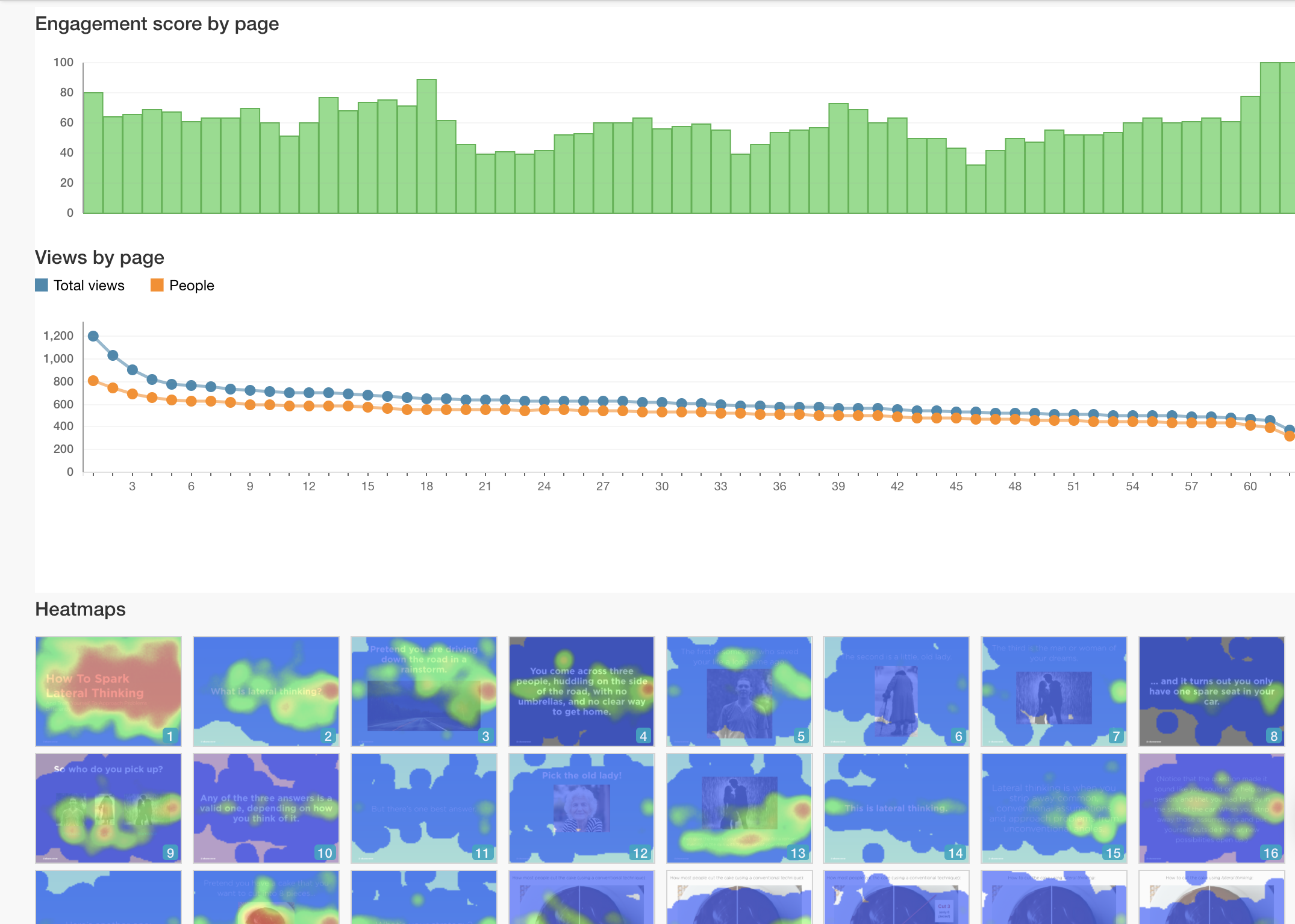
This is useful for a couple of reasons. First, I can see what parts of my e-books get particularly high engagement and turn those into blog posts or social posts, knowing that they are likely to resonate.
Second, I can track where people lose interest, and then adjust the content at those points so people see the content through. Here’s a little secret: I actually used this technology to optimize several chapters of Dream Teams itself. When I was working on the manuscript, I sent early draft chapters to readers, asking them to tell me what they thought. After they gave feedback, I looked at the chapter analytics to see what pages they paid most attention to and what bored them, which made the book better.
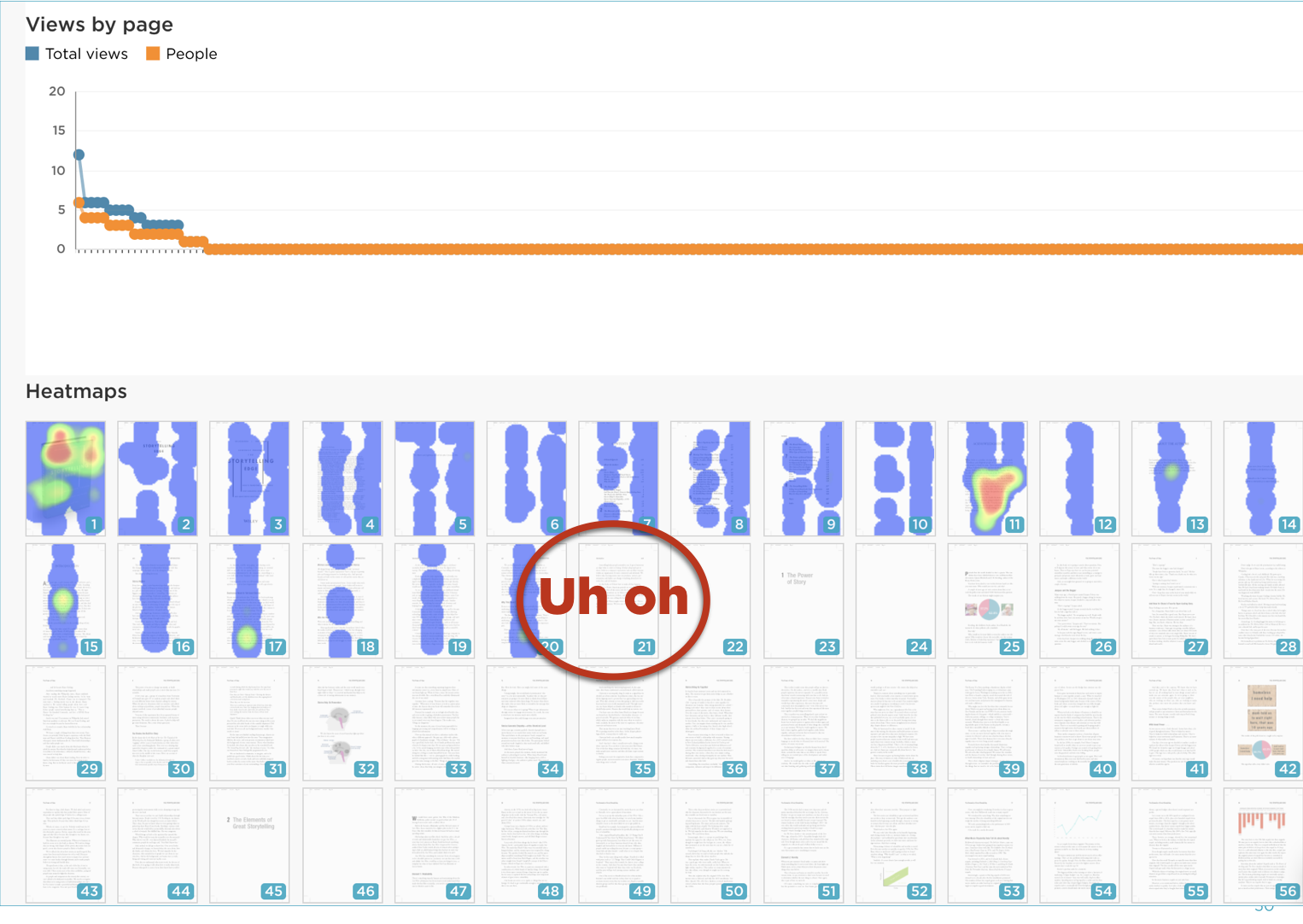
Next Steps
My book launch is now in full swing. In fact, this post is part of it!
I’m going to put together a full report of what happens, what I adjust and optimize, and what I learn when the campaign ends. I’m also going to put together a big behind-the-scenes report of all the tools and process I used to put the book together in the first place. If you want to get these, sign up for my mailing list. It’s all part of the plan. 😃
I hope this look behind the curtain of a big marketing campaign like this is useful. The moral of the story is if you want to set yourself up for a shot at success, you can’t just expect to throw content at the wall and get results. You have to start with the end in mind, figure out the capacity of your channels, and then make content to make the math work out.
And after all that, it’s about telling some great stories—which is by far my favorite part. Why do you think I write books, after all?
***
P.S. If you found this post helpful for thinking about your own content strategy, why not buy a book as a thank you? 🙂
Image by Thought Catalog / UnsplashGet better at your job right now.
Read our monthly newsletter to master content marketing. It’s made for marketers, creators, and everyone in between.




